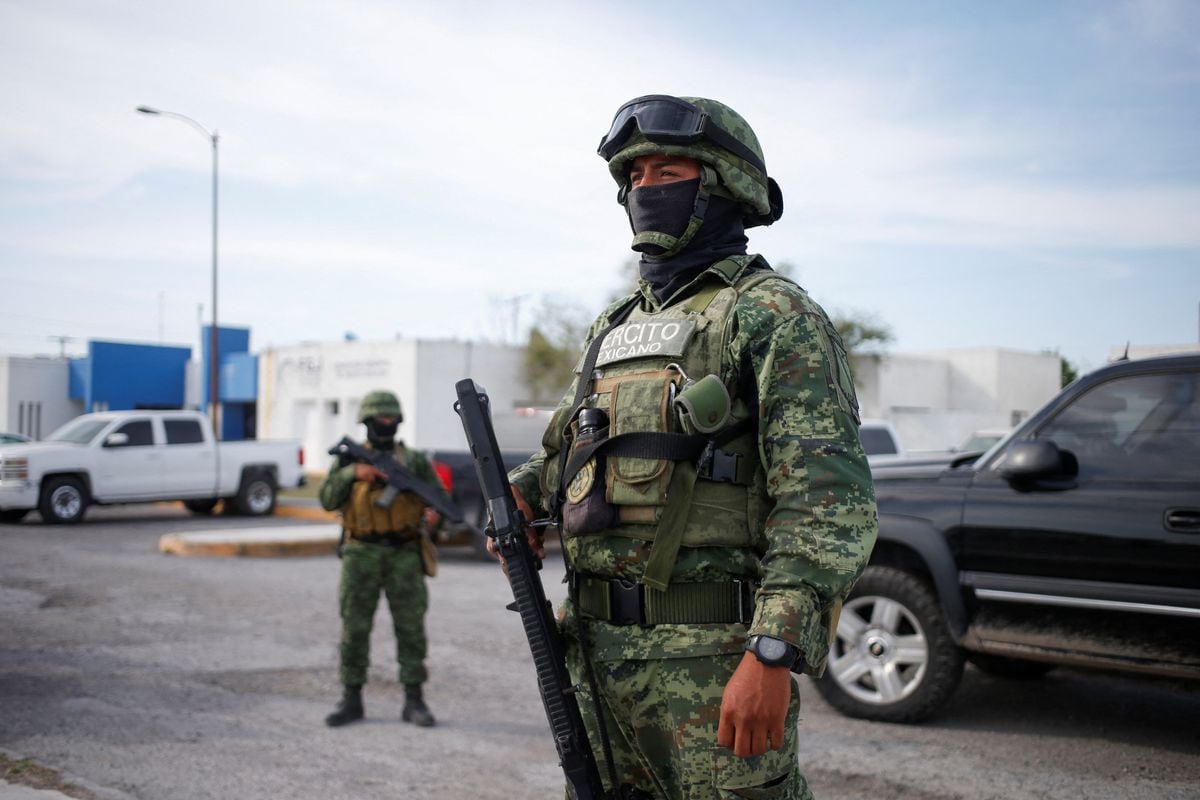The discovery this Tuesday of the four US citizens kidnapped on Friday in Matamoros, Tamaulipas, in northern Mexico, has closed a race against time.
The case threatened to become a major diplomatic conflict between the two countries.
The intervention of the FBI and the White House spurred the Mexican authorities, who found the disappeared in an uninhabited area a few kilometers outside the city.
Two were found dead and two alive.
Of the latter, one woman, Latavia MacGee, was unharmed, while the other, Eric Williams, had three gunshot wounds to the leg.
Both were handed over to the United States authorities on the same Tuesday.
The bodies of the other two, Zindell Brown and Shaeed Woodard, were left in Mexico for experts to perform necropsies.
Mexico had planned to deliver the bodies on Wednesday afternoon.
The resolution of the kidnapping, however, leaves many questions unanswered, the main one being the reason for the attack.
In his appearance before the press this Tuesday, the Tamaulipas prosecutor, Irving Barrios, pointed out that the main line of investigation into the attack is that it was a mix-up, although he did not provide further details.
At his side, the federal Security Secretary, Rosa Icela Rodríguez, qualified that other lines should not be ruled out.
The words of prosecutor Barrios opened space for speculation.
Did you mean that the attackers thought that the four friends were Haitian traffickers, as the United States media have pointed out these days?
Or were they mistaken for Haitian migrants who had somehow escaped the trafficking networks that criminals weave at the border?
Barrios did not want to go deeper.
It could be any of these reasons.
It could be another.
The Tamaulipas prosecutor, Irving Barrios, during a press conference on Tuesday. ALFREDO ESTRELLA (AFP)
The large number of cars that participated in the monitoring of the truck of the four fuels doubts.
Up to eight vehicles were part of the surveillance operation of the criminal group that attacked and kidnapped them.
So much deployment for four Haitian migrants?
It is unlikely.
The lack of explanations from the authorities feed theories of all kinds.
On Tuesday, the governor of Tamaulipas, Américo Villarreal, even pointed out that there was no indication that any of the four had any kind of relationship with US security agencies.
Another aspect of which hardly anything is known is the identity of the group of attackers.
On Tuesday, the authorities announced the arrest of a 24-year-old man, José Guadalupe N, who was supposedly in charge of the security of the wooden hut, where the authorities found the four friends locked up.
Asked if this man belonged to one criminal group or another, prosecutor Barrios preferred not to speculate.
Barrios did say that in and around the kidnapping area of Matamoros, the dominant criminal group is the Gulf Cartel.
It happens, however, that to say that is practically to say nothing.
An old criminal network in the northeast of the country, the Gulf Cartel has progressively divided since the arrest in 2003 of its then leader, Osiel Cárdenas.
The capture of Cárdenas originated the first rupture, that of Los Zetas, their armed wing.
Elements of the Mexican Army at the site where the bodies of the four Americans were found, on March 7. DANIEL BECERRIL (REUTERS)
It was the first of many breaks.
From there came the Escorpión group and the Los Ciclones group, identified these days as possible perpetrators of the attack, nothing officially confirmed by authorities.
In a report from two years ago, Lantia Consultores, a company specializing in crime analysis, pointed out that the Gulf Cartel is an organization that "was no longer cohesive, but divided into different antagonistic gangs."
Lantia pointed out the existence of up to 14 different groups.
The last of the loose ends points to the location of the four.
As reported by Governor Villarreal on Tuesday, the criminals moved the captives through different parts of the city, before transferring them to the wooden hut of the La Lagunona area, in the Ejido El Tecolote, on the way to the coast.
The question is how they got there.
The Tamaulipas Prosecutor's Office had set up a telephone number and an email address to obtain information, but in his appearance before the press, prosecutor Barrios did not say that the lead that led to the ejido had come from a citizen complaint.
What's more, authorities visited La Lagunona on Monday afternoon, hours before the four US citizens were found there.
It was not the only place they visited twice.
The search group also visited a subdivision in the south of the city, where, yes, an anonymous whistleblower claimed to have seen one of the trucks that the attackers had used.
Subscribe here to the
EL PAÍS México
newsletter and receive all the key information on current affairs in this country

